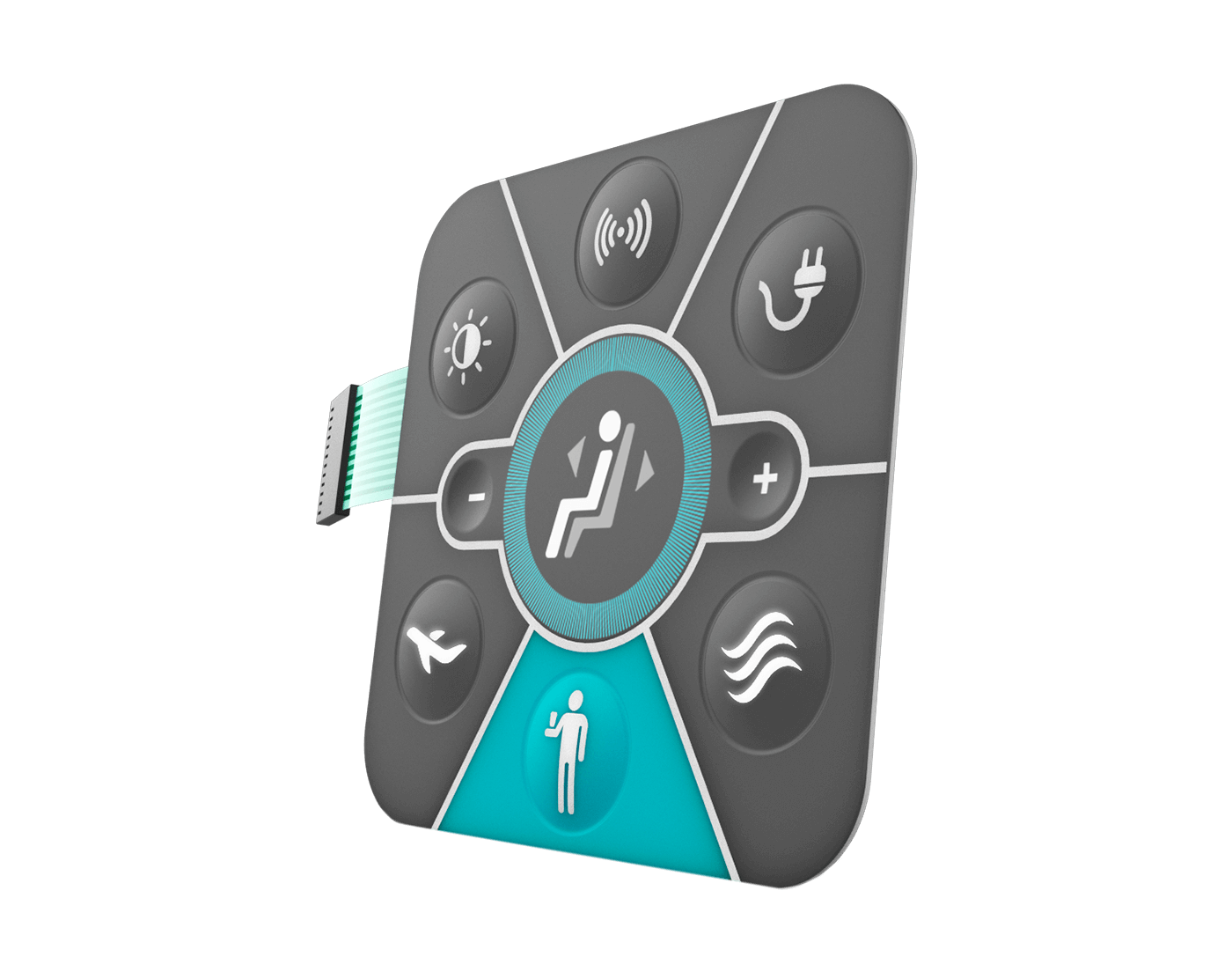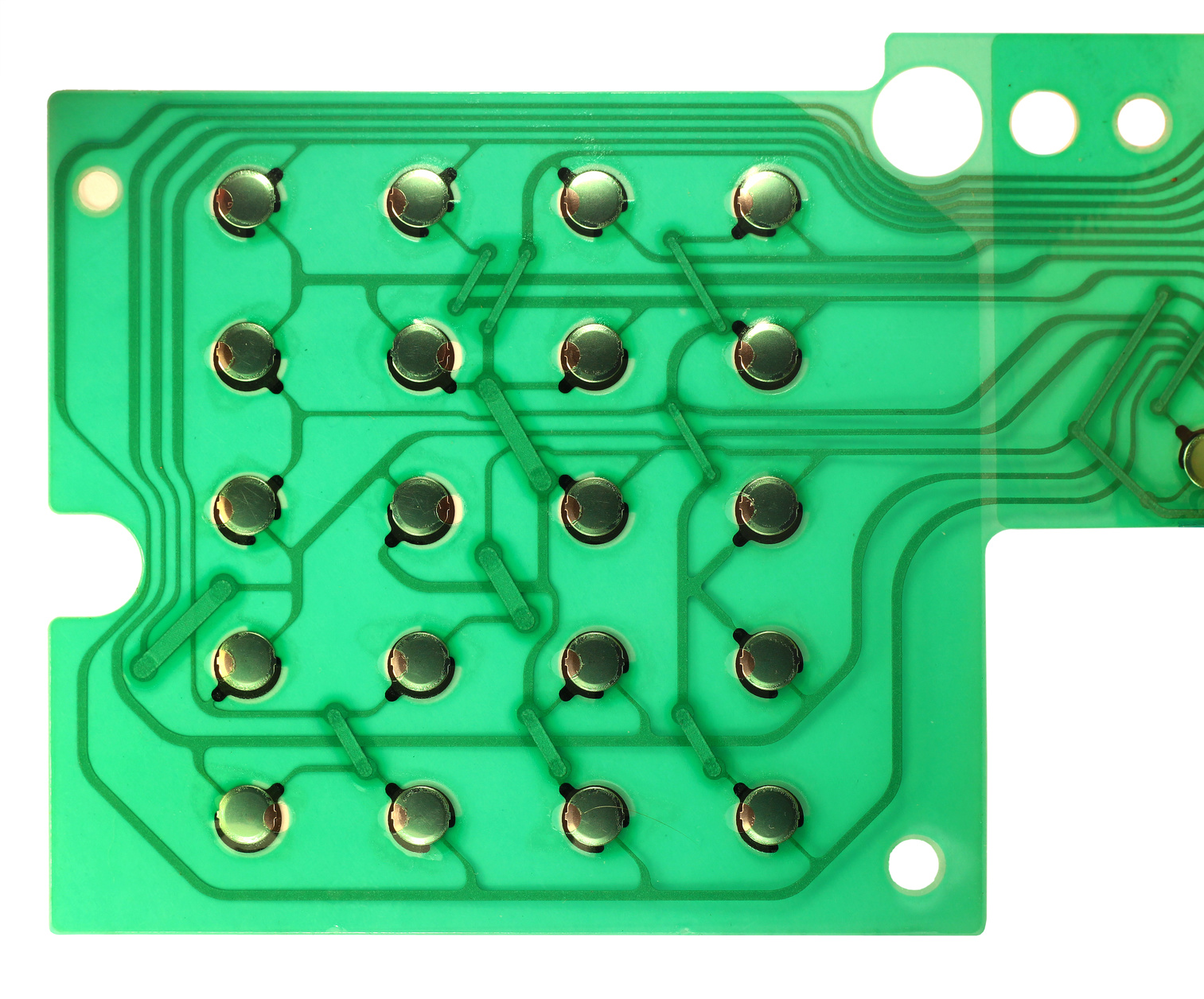Discover How Membrane Switches Feature and Their Function in Modern Electronic Devices
Membrane Switches represent an innovative integration of modern technology and design within the realm of modern electronics, working as crucial user interfaces in various gadgets. Made up of multiple layers, these buttons make use of pressure-sensitive systems to assist in customer communication. Their applications cover various sectors, from customer electronic devices to clinical equipment, highlighting their flexibility and significance. Comprehending the details of Membrane button functionality and their more comprehensive ramifications in boosting user experience welcomes more expedition right into their layout, advantages, and the cutting-edge growths shaping their future in modern technology.
What Are Membrane Buttons?

Membrane switches are identified by their durability and resistance to ecological variables, such as dirt, dampness, and severe temperatures. They can be personalized with various graphics, shades, and tactile comments choices, improving individual experience while maintaining visual allure - membrane switches. Moreover, the consolidation of published circuits permits seamless combination into devices, improving total performance.
The versatility of Membrane switches is obvious in their capacity to support both complex and basic control features. They can include attributes such as LED indicators and touch-sensitive modern technology, accommodating details user demands. As modern technology remains to develop, Membrane Switches remain important for enabling user-friendly and efficient interface, thus playing a crucial duty in the advancement of contemporary digital gadgets.
Components of Membrane Switches
Membrane switches are composed of several essential components that function together to create a trustworthy and functional interface. The primary elements include the graphic overlay, adhesive layer, spacer layer, and conductive traces.
The visuals overlay offers as the interface, commonly published on a flexible substratum such as polyester or polycarbonate. This layer not just provides visual appeal yet additionally includes responsive comments, aesthetic hints, and protective attributes. Under the graphic overlay lies the glue layer, which safeguards the button to the gadget and makes sure sturdiness versus environmental stress and anxieties.
The spacer layer is essential for maintaining the needed gap between the graphic overlay and the circuit layer. This space permits for the activation of the switch when stress is applied. The conductive traces, generally made from silver or carbon, create the electric pathways that finish the circuit when the switch is involved.
Additionally, a support layer might be consisted of for structural support and insulation. These components team up effortlessly, making sure that Membrane switches are both user-friendly and durable, making them indispensable in different modern-day digital applications.
How Membrane Switches Work
Exactly how do Membrane Switches feature efficiently within digital devices? Membrane Switches run on the principles of pressure-sensitive modern technology, using a layered construction that includes graphic overlays, glue layers, and conductive aspects.
The design of Membrane buttons is essential for their efficient procedure (membrane switches). The layers are diligently engineered to give responsive comments, durability, and resistance to ecological aspects such as moisture and dust. The addition of domes-- small, raised areas within the button-- improves tactile feedback, providing customers with an obvious click sensation upon activation
In addition, Membrane switches can be customized in terms of size, form, and graphics, making them suitable for numerous applications. They are frequently utilized in control panels, clinical tools, and consumer electronics because of their streamlined design and integrity. Overall, the effective performance of Membrane buttons is crucial in enhancing individual interaction and making sure seamless operation in modern digital gadgets.

Applications in Modern Tools
Using their special layout and functionality, Membrane switches have actually become important components in a vast array of modern digital devices. These versatile interfaces are employed in consumer electronics, industrial equipment, clinical devices, and automobile controls, offering seamless user communication.
In customer electronics, Membrane buttons are commonly found in appliances like microwaves, cleaning makers, and other home tools, where they enable instinctive control with a smooth account. Their inconspicuous layout promotes combination into small gadgets, enhancing visual allure without compromising capability.
In commercial applications, Membrane Switches function as control panels for equipment, using durability and resistance to harsh settings. Their capability to withstand dampness and contaminants makes them ideal for use in production and handling sectors.
Medical tools additionally take advantage of Membrane buttons, which are made to be simple to clean and keep, making certain hygiene in clinical settings. They are frequently made use of in diagnostic equipment, client tracking systems, and portable medical gadgets, where reliability is extremely important.
Benefits of Membrane Buttons
Among the vital benefits of Membrane switches is their this article flexibility, which allows internet them to be tailored for a range of applications throughout numerous industries. These buttons can be made in various sizes and shapes, fitting unique item requirements while supplying seamless assimilation right into tools. Their thin account allows a compact and streamlined style, usually improving the visual appeal of electronic items.
An additional significant benefit is their longevity - membrane switches. Membrane buttons are typically resistant to dirt, dampness, and chemicals, making them suitable for harsh settings. This strength extends their life-span compared to typical mechanical switches, reducing the need for regular substitutes
Furthermore, Membrane Switches deal cost-effectiveness. The manufacturing procedure entails printing modern technologies that minimize production prices, specifically for huge runs. This affordability, integrated with reduced maintenance demands, makes them an eye-catching choice for makers.

Conclusion
In conclusion, Membrane Switches stand for a considerable development in individual interface modern technology within contemporary electronics. As the demand for resistant and instinctive interfaces continues to grow, the duty of Membrane switches in shaping individual experience will unquestionably expand.
Membrane Switches stand for an advanced integration of innovation and design within the world of modern electronic devices, offering as vital user interfaces in many tools.In the world of contemporary electronics, Membrane Switches offer as crucial elements that facilitate customer communication with tools. As innovation proceeds to evolve, Membrane Switches continue to be crucial for enabling efficient and instinctive customer interfaces, consequently playing a pivotal role in the innovation of contemporary electronic tools.
Just how do Membrane Switches function properly within digital tools? Generally, the efficient performance of Membrane buttons is pivotal in improving user interaction and ensuring seamless operation in modern-day digital devices.